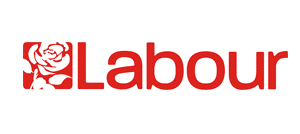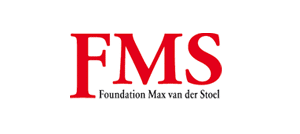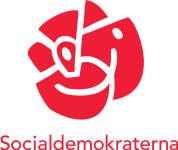Montenegro
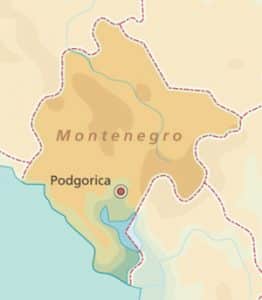
On the other hand, business tycoons are dominating an economy that mostly runs on remittances and tourism, major incidents around election day are the rule rather than the exception, and the country has only recently experienced its first change of power. Under the rule of Milo Đukanović, who has been prime minister four times and president twice, Montenegro has faced severe accusations of authoritarianism and clientelism. While Montenegro is seeking closer ties with the West economically and politically, its economy also remains dependent on the East. The country is heavily dependent on Russian tourists and investments, while, with its massive highway construction project, the country is under threat of becoming “debt dependent” on China. As its economy relies on tourism, Montenegro was struck especially hard by the COVID-19 pandemic. The economy shrank by 15% in 2020.
After the August 2020 elections, Montenegro saw its first change of power since its independence in 2006. The country had been ruled by President Milo Đukanović’s Democratic Party of Socialists (DPS) up until then. It remained the largest party, but was blocked by a coalition of five different, mostly pro-Serb political forces, of which the largest is also composed of six parties. They managed to form a technocratic government, with a slim majority of only one seat. The coalition was spearheaded by Zdravko Krivokapic, representing the For the Future of Montenegro Party. He was installed as prime minister in December of 2020, but quickly faced an almost insurmountable challenge, regarding Montenegro’s poor financial situation, which was exaggerated by the COVID-19 pandemic and its Chinese debt.
In February 2022, after only 14 months in power, the Krivokapic government fell after a vote of no-confidence in parliament. Several issues alluded to a government collapse. Coalition partners disagreed over several issues, primarily the role of the Serbian Orthodox Church (SOC), the handling of ties with Serbia and Russia, and the stagnant EU accession procedure. Krivokapic’s appeasement of the SOC in Cetinje in September 2021 enraged thousands and caused mass demonstrations. Divisions in the coalition also arose when Krivokapic intended to replace justice minister Leposavić after he denied the Srebrenica genocide.
On April 28, 2022, the leader of the Black and White bloc (URA), Dritan Abazović, replaced Krivokapic as the Prime Minister of Montenegro, with a mandate for a year. His moderate minority government, which the DPS agreed to support, consists of the URA bloc, the Socialist People’s Party, the Social Democratic Party, the Bosniak Party and two ethnic Albanian coalitions. They were intended to form the government until the spring of 2023, when new elections were scheduled to take place.
However, Abazović caused disagreements within the coalition due to his prioritisation of ties with Serbia over those with the EU. This even led the Minister of European Affairs, Jovana Marović, to resign. Finally, after an agreement between Montenegro and the Serbian Orthodox Church, the government collapsed in August 2022 after parliament backed a vote of no-confidence called by the party of President Milo Djukanovic and smaller parties in the ruling coalition, worsening the country’s political instability. The administration led by Abazovic, became the government with the shortest period in power in Montenegrin political history. A new government failed to form, which led President Đukanović to dissolve the Montenegrin Parliament on the 16th of March 2023, right before the presidential elections on the 19th of March.
These presidential elections again marked a historic change of power as Jakov Milatović, representing the anti-corruption and pro-European Europe Now! party, outperformed former president Milo Đukanović, who had ruled Montenegro for more than three decades and had often been accused of clientelism and corruption. President Milatović, who previously served as the minister of economic development in Krivokapić’s cabinet, assumed office on the 20th of May 2023. Milatović strongly supports accession to the EU, but also advocates for closer ties with Serbia.
As Parliament had been dissolved, new parliamentary elections were held on the 11th of June 2023. As with the presidential elections, Europe Now! secured a victory by winning most seats, being 24 out of 81. This marked another significant loss for the DPS, which finished second. The Europe Now party is seeking to form a governing coalition after coming first in recent elections, but potential partners will drive a hard bargain. Milojko Spajic, the head of the centrist Europe Now, which came first in the June elections but didn’t get an outright majority, is negotiating with Democratic Montenegro, the Socialist People’s Party and minority parties in order to secure the necessary majority of 41 MPs in the 81-seat parliament. Reports suggested that Spajic will also try to include the proSerb For the Future of Montenegro bloc in the ruling majority, but has refused to negotiate with the former ruling party, the Democratic Party of Socialists, or with the URA civic movement, led by outgoing Prime Minister Dritan Abazovic.
-
Want to get notified by mail when this country gets updated?
Subscribe to our newsflash below!
Key Info
1 Political Situation
1.1: Delicate position between the West and the East
Montenegro became a NATO member in June 2017. The country is also a candidate country for the EU. Out of the 35 negotiation chapters, three have been provisionally closed, and 32 have been opened. The initial invitation to NATO led to protests by pro-Serbian parties and their supporters. Further protests were fueled by the opposition alliance Democratic Front (DF) who voiced accusations of corruption, undemocratic practices and election fraud against President Milo Đukanović (Democratic Party of Socialists, DPS). During the elections of 2016, several incidents occurred reflecting the seemingly mutually exclusive support for NATO and Europe, on the one hand, and Russia, on the other.
The Russian government has been critical of Montenegro’s bid to join NATO, which culminated in a coup attempt on 16 October 2016. Russia still has a large economic presence in Montenegro, with almost 30 per cent of Foreign Direct Investment in 2016 going to Montenegro coming from Russia. This, on top of the fact that roughly one-third of foreign companies operating in the country are owned by Russians. Although Russia has ‘lost’ Montenegro to NATO, the country remains determined to exert influence in the region. After Russia’s invasion of Ukraine, Montenegro, unlike Serbia, joined EU sanctions against Moscow, sent aid to Ukraine, and expelled a number of Russian diplomats. The Kremlin has placed Montenegro on its list of unfriendly states.
Montenegro signed an association agreement with the EU in 2007, applied for membership in December 2008 and garnered candidate membership in December 2010. Accession negotiations began in June 2012. The European Commission writes in its 2023 enlargement report that serious steps are needed especially in the area of rule of law. Judicial reforms have not been implemented and are delaying negotiations. Corruption and organised crime are both major challenges for Montenegro, and corruption reaches high in state structures. Progress in these areas is very limited. Fundamental rights are largely guaranteed, but society (including media landscape) is very polarised which still leads to much discrimination, towards LGBTIQ+, women and Roma. Economically, Montenegro has made little progress and is moderately prepared for the competitive pressures and market forces of the EU single market. Montenegro is active in regional cooperation and its foreign policy is in line with that of the EU. Partly due to political instability, Montenegro has recently been able to make few steps in their package of reforms. Interim governments did not prioritise EU issues. The question is whether this will change in the near future given the unstable composition of the new government that was recently inaugurated.
1.2: Montenegro after its independence from Serbia
After World War II Montenegro became one of the six equal republics of the Yugoslav federation. After the disintegration of Yugoslavia, Montenegro remained in a union with Serbia as the State Union of Serbia and Montenegro. On 21 May 2006, a referendum was held, where the majority of the Montenegrin population (55.5 per cent) declared to be in favour of independence. With that, the threshold of 55 per cent, as stippled by the EU, was narrowly passed. Montenegro’s first parliamentary and presidential elections as an independent state as well as the parliamentary elections of October 2012 did not bring any big political changes.
1.3: The fragile Krivakopić cabinet
After the 2020 elections, an awkward coalition formed between several parties to put Đukanović’s DPS into opposition. It ended Đukanović’s 30 year rule in Montenegro. The coalition was spearheaded by the independent new prime minister Zdravko Krivakopić, and included a variety of parties, the pro-Serbian Democratic Montenegro (DCG) and liberal United Reform Action (URA) standing out. Krivakopić was a major figure in the 2020 Montenegrin protests after Đukanović tried to curb the power of the Serbian Orthodox Church (SOC) in the country. The relation with Serbia proved to be an important issue again for the new coalition. And quickly, relations between coalition parties soured due to geopolitical relations and a lack of economic progress.
In Cetinje, 2021, protests broke out after the SOC wanted to inaugurate a new metropolitan. Krivakopić and DCG tried to appease the situation, while URA asked for the ceremony to be organised elsewhere. On the other hand, a justice minister was voted from office after he denied the 1995 Srebrenica genocide. Pro-Serbian elements in the coalition called the decision to let the minister of ‘voter fraud’, sparking anger in the coalition. Lastly, Krivakopić’s stance towards coronavirus vaccination caused unrest in the coalition, as he allegedly refused to be inoculated. He also refused to wear a mask on several occasions.
The EU accession process remained stalled. The Krivakopić cabinet hoped to speed the process up with the removal of Đukanović, however this proved to be in vain as political bickering has only made a possible EU accession increasingly difficult. In January 2022, URA filed a vote of no-confidence against Krivakopić and his cabinet. On February 5, 2022, the coalition fell.
1.4: April 2022 – August 2022 – A short-lived minority coalition
The leader of the Black and White bloc (URA), Dritan Abazović, was elected on April 28, 2022 as the new Prime Minister of
Montenegro, with a mandate for a year. His minority government consists of the URA bloc, the Socialist People’s Party, the Social Democratic Party, the Bosniak Party and two ethnic Albanian coalitions. They planned to form the government until the spring of 2023, when new elections were scheduled to take place.
His former coalition partners, the pro-Serbian ‘For the Future of Montenegro’ and “Peace is Our Nation”, accused Abazović of betrayal and boycotted the vote. 45 members of the 81-seat Montenegrin Parliament voted in favour of the new minority coalition.
Abazović said he finally wanted to speed up EU integration. He is considered a pro-democratic, liberal and moderate in the Montenegrin political landscape. He said: “I will lead an active political dialogue to improve the atmosphere in society and reduce the country’s polarisation. I do not agree that Montenegro should be divided into two opposing sides, but develop as a civil state with respect for all differences.”
The DPS of Dukanovic saw a return to power in the new minority government, as it would deliver key political support from the opposition. A DPS MP reacted delightedly: “Despite expectations, we didn’t disappear from the political scene. At the moment, the DPS supports this government, but we will return to power at full capacity in a very short period of time.”
Five issues were considered to be key to the new government, according to Abazović: EU integration, battling corruption, sustainable investment and development, protection of the environment and better care for children and the youth. All eyes in Montenegro are on the EU integration process – especially now a window of opportunity looms due to the Russian invasion of Ukraine. However, Russian, and especially Serbian influence remains of importance in the country.
The government of Abazović became the shortest-running administration in Montenegrin history after a motion of no-confidence on August 20, 2022 was accepted. The political instability in Montenegro was set to continue as the same parties and blocs that formed a coalition after the 2020 elections were planning to form a new government until the general elections in 2023. This coalition was composed of various pro-Serbian parties from the ‘Democratic Front’ and ‘Peace is Our Nation’ coalitions, next to the Socialist People’s Party and Abazović’ URA. These parties have a slender majority in Montenegro’s parliament (41-40 seats). However, this new government failed to form, which led President Đukanović to dissolve the Montenegrin Parliament on the 16th of March 2023. As Parliament had been dissolved, new parliamentary elections were held on the 11th of June 2023.
1.5: The new government after June’s elections
In June’s elections, Europe Now! secured a victory by winning most seats, being 24 out of 81. This marked another significant loss for the DPS, which finished second. The Europe Now party is seeking to form a governing coalition after coming first in recent elections, but potential partners will drive a hard bargain. Milojko Spajic, the head of the centrist Europe Now, which came first in the June elections but didn’t get an outright majority, is negotiating with Democratic Montenegro, the Socialist People’s Party and minority parties in order to secure the necessary majority of 41 MPs in the 81-seat parliament. Reports suggested that Spajic will also try to include the proSerb For the Future of Montenegro bloc in the ruling majority, but has refused to negotiate with the former ruling party, the Democratic Party of Socialists, or with the URA civic movement, led by outgoing Prime Minister Dritan Abazovic.
1.6: The emergence of the Europe Now party
In both recent elections, the Presidential and Parliamentary elections in 2023, the Europe Now party, which was only formed in September 2022, secured significant victories. The party runs on a liberal, pro-EU accession platform and is largely considered pro-Western. Oddly, some party members have also advocated for improving ties with Serbia. Whichever direction, a difficult task awaits the Europe Now-party. Combined with the COVID-19 pandemic – which shrunk the economy by 15% – Podgorica is plagued by its dependence on trade and tourism from Russia and a large debt with China.
Despite its hopeful anti-corruption and pro-European sentiments, its rise to power might be less positive than it might seem. The party has economic plans for extraordinarily high popular spending, for example on pensions and minimum wage. Experts deem these plans unviable in over-indebted Montenegro. Some fear the populist tendencies of this party and what will happen after they have been in power for a period of time. If they end up exploiting the state treasury, this could lead to economic crises which are unfortunately very likely to fuel far-right, anti-EU, and pro-Russian sentiments.
1.7: Female representation and women’s rights
Women remain significantly underrepresented in Montenegrin politics. At the 2018 presidential election, Draginja Vuksanović-Stanković became the first female presidential candidate in the history of the country, and also appeared in the 2023 presidential election campaign. Despite such improvements, Montenegro lags behind other Western-Balkan countries. As such, the Women’s Political Network (WPN) Montenegro is one of the organisations that has been strongly pushing to increase the current 27% share of female politicians to at least 30%.
Women continue to be discriminated against in Montenegro’s patriarchal society. Especially when it comes to work, there is a large gap to be bridged. Despite being a better-educated part of society, women continue to participate much more in unpaid work and household care. It is therefore no surprise that 60 percent of Montenegrin citizens believe that it is preferable for a man to work and for a woman to dedicate herself to the family.
In 2021, the Montenegrin Ministry of Justice, Human and Minority rights adopted a National Strategy for Gender Equality 2021-2025. According to the European External Action Service, the operative goals of the strategy are to “improve the implementation of the existing normative framework regarding gender equality policy and protection against gender-based discrimination, as well as to improve education, culture, and media policies in order to reduce the level of stereotypes and prejudices towards women and persons of different gender identities. The final operative goal is to increase the participation of women and persons of different gender identities in areas that provide access to natural and social resources and the benefits of their use.”
1.8: LGBTI rights
When it comes to LGBTI rights legislation in Montenegro, much can still be improved. The country was ranked 11th out of all 48 European countries when it came to LGBTI rights legislation. Homosexuality has been legal in Montenegro since 1977 and its parliament took an important step in July of 2020, when it voted to recognize same-sex unions as of July 2021. In 2010, several laws were already adapted that prohibited discrimination based on someone’s sexual orientation and gender identity. This was a requirement for EU membership. However, same-sex marriage was declared unconstitutional when the country’s constitution was adopted in 2007. Nothing has changed in that regard.
The LGBTI community also continues to face challenges. The progressive legislation has yet to result in more general acceptance of the LGBTI community among Montenegro’s population. Despite the important step that was taken in 2020, still 71% of Montenegrins declared that they considered homosexuality an illness. 50% also believed that it was a danger to society and needed to be oppressed by the state. As such, many cases of violence and discrimination against LGBTI people remain unreported. As the country is very small, the gay scene also is. A notable NGO is Queer Montenegro, which organises the annual Pride parades, which are held despite strong opposition and threats from the influential Serbian Orthodox Church.
2 Elections
2.1: Electoral System
For parliamentary elections, Montenegro uses a closed list proportional representation (CLPR) system. With 81 seats in parliament, the voting threshold for most parties, except for minority lists, is 3 percent. These elections are normally held every four years and voting is not compulsory. There is a legislative quote of 30% for women.
For presidential elections, in case no candidate receives an absolute majority in the first round, a second runoff between the two first placed candidates is held.
2.2: Parliamentary elections
The Montenegrin electorate most recently went to the polls on Sunday 11 June 2023 for the parliamentary election, the first since the ousting of power of longtime leader Milo Đukanović and the earlier defeat of his Democratic Party of Socialists in 2020. The election – which was held early because of a fall of government and a subsequent stalemate – was won by the new Europe Now! Party, led by Milojko Spajić and newly elected President Jakov Milatović. With the Democratic Party of Socialists (DPS) becoming the second largest party by a small margin, however, it remains to be seen who will gather enough support to form a government. These elections marked the first time the DPS failed to win most seats since the introduction of multi-party politics in 1990. Whoever will form a government has to face the challenge of restoring confidence in politics: voter turnout on Sunday was at a record low of 56.4%, a significant decrease compared to the 2020 parliamentary elections, when the turnout was 73.4%.
Europe Now! obtained roughly 25.6% of the votes, equaling 24 out of 81 parliamentary seats. An alliance consisting of the Democratic Party of Socialists (DPS) and a number of allied parties, meanwhile, came in as a close second with 23,2% of the votes, equaling 21 seats.
The biggest electoral loss of the day belonged to the alliance of pro-Russian and pro-Serbian parties called For the Future of Montenegro. While the alliance finished third with 14.7%which accounts for 13 seats – this constitutes a loss of nearly 20% compared to the 2020 parliamentary election. The number of seats will, correspondingly, be halved. Democratic Montenegro – led by outgoing Prime Minister Dritan Abazovic – had to settle for 12.3% and 11 seats. Other significant results include the 1.9% of Albanian List and 1.5% of Albanian Coalition, which grants them 2 and 1 seats respectively because of ethical quota.
The result is a disappointment for Montenegro’s Social Democratic Party. While obtaining roughly 2.9% of the votes, this means the social democrats will stay just under the electoral threshold of 3% due to the highly complex quota system in Montenegrin politics
Election results
| Party | Seats |
| Europe Now! (PES) | 24 |
| Together! (DPS, SD) | 21 |
| For the Future of Montenegro (NSD, DNP) | 13 |
| Aleksa and Dritan – Bravery Counts (DCG, URA) | 11 |
| Bosniak Party (BS) | 6 |
| For You Coalition (SNP, Demos) | 2 |
| Albanian Forum (ASh, LDs) | 2 |
| Albanian Alliance (FORCA) | 1 |
| Croatian Civic Initiative (HGI) | 1 |
2.3: Presidential elections
After years of economic hardship and insatiable governments, Montenegro held presidential elections on Sunday, March 19 2023. At stake was the political career of Milo Djukanovic, Montenegro’s political leader for nearly three decades. In Montenegro, most power lies with the Prime Minister, as the President fulfils a relatively ceremonial role.
Among the most promising candidates challenging the incumbent Djukanovic were Andrija Mandic and Aleksa Becic, leaders of the ruling Democratic Front and Democratic Montenegro respectively. Europe Now’s Jakov Milatovic was also seen as a contender.
With 35 percent of the votes, Đukanović obtained the most votes in the first round. With 29 percent, however, second placed Jakov Milatović came closer to Đukanović than expected. The result meant that the pro-Russian and pro-Serbian Andrija Mandić – who obtained around 19 percent of the votes – was out of the race. Democratic Montenegro-leader Aleksa Bečić collected 11 percent, while the opposition candidates Draginja Stankovic and Goran Danilović took 3 and 1.4 percent respectively.
Soon after admitting his defeat, Andrija Mandić called on his supporters to vote for Milatović. Since other candidates were expected to do the same, experts were seeing Milatovic as a strong favourite for the run-off.
On Sunday April 2, Jakov Milatović (Europe Now) – who was supported by the ruling majority – won the runoff round of the Montenegrin presidential election. This ended incumbent Milo Đukanović’ (Democratic Party of Socialists) three-decade spell in prominent government positions. While Montenegro is expected to maintain its pro-EU course, critics are sceptical about the economic woes and corruption issues Milatović will inherit, as well as his pro-Serbian agenda. Rumour has it he is supported by the Serbian Orthodox Church.
The result rendered expert predictions correct, as Milatović obtained a strong majority with 60,1% of the vote against 39,9% for Đukanović. With 70,7%, voter turnout for this election was notably higher than the presidential election of 2018 (63%). According to two election watchdogs, the run-off round was marked by several irregularities. Party activists were reportedly seen recording and giving money to voters. Đukanović’ DPS, furthermore, claimed that its activists were intimidated in the towns of Niksić and Bar.
Election results — 1st round
| Candidate | Percentage (%) |
| Jakov Milatović | 28.92 |
| Milo Đukanović | 35.37 |
| Andrija Mandić | 19.32 |
| Aleksa Bečić | 11.10 |
| Draginja Vuksanović | 3.15 |
| Goran Danilović | 1.38 |
| Jovan Radulović | 0.76 |
| Voter turnout | 64.00 |
Election results — 2nd round
| Party | Percentage (%) |
| Jakov Milatović | 58.88 |
| Milo Đukanović | 41.12 |
| Voter turnout | 70.14 |
3 Political Parties
Social Democratic Parties
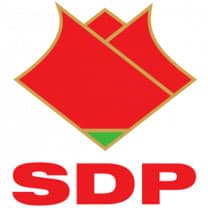
The SDP was founded in June 1993 after a merger of the Social Democratic Reform Party and the Socialist Party of Montenegro. The party is firmly anti-war oriented. Its main goal is the development of a “democratic internationally recognised and independent Montenegro that keeps abreast with Europe in order to provide better life, greater rights, freedoms and happiness for every person and for all people”. Over the years SDP remained a relatively small party (around 5 percent of the votes), however, at the parliamentary elections in 2009 SDP succeeded in getting just over 11 percent of the votes, which meant 9 out of 81 seats in the parliament. The party managed to attract more young progressive voters and became the third biggest party in the country.
Despite being a relatively small party, SDP managed to play a notable role in the political scene over the years. Although regarded by critics as the small supportive brother of the ruling Democratic Party of Socialists (DPS), at the local elections in 2010 SDP ran separately from DPS for the first time in a decade and got its best election result: around 15 percent of the votes. During the 2012 parliamentary elections, the DPS was a part of the European Montenegro coalition, together with the Democratic party of Socialists and the Liberal Party, which managed to secure 45.6 percent of the votes and thus 39 seats out of the 81 in parliament.
In 2012 the SDP was part of the Coalition for a European Montenegro led by Đukanović. In 2016, after a split within their party, the SDP left the ruling coalition and following the announcement of a vote of no confidence, voted against the government. The split provided an opportunity for SDP to reform and modernise into a citizens’ party, transparent and open to outside influence and a focal point for civil society and human rights activists. Furthermore, the party could engage in new partnerships with the progressive opposition that will have more room to manoeuvre as the EU accession negotiations move on.
SDP is member of Socialist International and associate party of Party of European Socialists (PES). The party is best described as a centre-left party. During the 2018 presidential elections, the party put forward Montenegro's first female presidential candidate Draginja Vuksanović. She came in third during the elections. In 2019 Vuksanović also took charge of the party. However, after a disappointing election result in 2020, with the party losing two of its four seats, she was ousted as party leader. Raško Konjević is the current party president.
From April 2022 until a new cabinet is formed, the SDP is a member of Abazović’ minority coalition, in which they delivered key cabinet positions, such as the Minister of Foreign Affairs, Ranko Krivokapic, and Minister of Defense, Rasko Konjevic.
In the June 2023 elections, while obtaining roughly 2.9% of the votes, the party stayed just under the electoral threshold of 3% due to the highly complex quota system in Montenegrin politics, making them lose all of their seats in parliament.
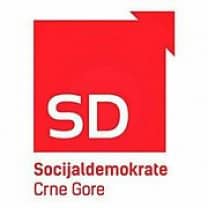
In 2015 the Social Democrats of Montenegro was created as a new political party by a split faction of the DPS. Almost half of the party officials left the SDP and joined the newly established Social Democrats (SD) that consist of prominent SDP members who are close to the DPS. After the elections of 2016, the SD joined the ruling coalition with SDP and several national minorities parties, having won two seats in the parliament. The party ran independently in the 2020 parliamentary elections, obtaining 3 seats. It became part of the opposition. It participated in the 2023 parliamentary elections in a coalition with DPS and the Liberal Party (LP). It again obtained 3 seats.
On 30 January 2022, the Social Democrats elected a new president of the party, Damir Šehović, the former Minister of Education, replacing the former party president Ivan Brajović, who did not apply for a second term. The SD ideology is similar to the SDP, pursuing neoliberal economic policies and pro-Europeanism.
Other Parties

The Europe Now Movement was founded in June 2022 by former independent Ministers of Finance and Economy, Milojko Spajić and Jakov Milatović. It is a populist liberal party which focuses on economics, centrist politics, and anti-corruption. It advocates for both pro-EU policies and ties with Serbia. The party debuted at the October 2022 local elections in which it achieved good results. In January 2023, it announced Milojko Spajić’s candidacy for the presidential elections. However, due to his Serbian citizenship, he was disqualified. Therefore, Jakov Milatović was nominated instead. He managed to defeat the long-ruling Milo Đukanović. After significant victories in local and presidential elections, Europe Now! also managed to become the largest party at the 2023 parliamentary elections, obtaining 24 seats. However, it has to find partners to form a majority government.
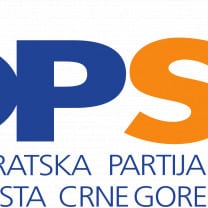
The Democratic Party of Socialists, founded in 1991, is a successor to the former leading League of Communists. In 1992, the party supported the continued existence of the Federal Republic of Yugoslavia. Until October 1997 the party was led by former President of Montenegro Bulatovic (from December 1990 – October 1997). In January 1998 Milo Djukanović was sworn in as President of the Republic, after beating his former ally Bulatovic – who was removed from the party – in the presidential race. In the same year he was elected Chairman of DPS and has led the party ever since.
With Djukanović becoming president, DPS took more and more distance from Milosevic. The pro-Serbian, pro-Milosevic element then broke away in 1998 to form a new party, the Socialist People’s Party. At the fourth party congress in 2011, the DPS reinvented its main goals, fighting for a democratic, internationally recognised and independent state of Montenegro. DPS holds such an independent Montenegro is the main condition for its development and Europeanization. Furthermore, other leading issues in its platform are tolerance and improvement of life standards for all citizens of Montenegro.
The DPS had won every general election in Montenegro since the first multi-party elections of 1990 to 2020. In June 2012, the DPS-led government celebrated the official start of membership talks with the EU. Additionally, the party strongly favours joining NATO, despite the lack of popular support for this idea. Nominally a social democratic party, opposition parties accuse it of becoming a ‘catch-all’ party and pursuing neoliberal economic policies and of disregarding welfare safeguards. It is said to be one of the best organised parties in the region, with approximately 100,000 members. Polls show that, despite the existence of ethnic minority parties in Montenegro, many members of those minorities, such as Bosniaks and Albanians, prefer to vote for the DPS.
In the 2012 elections, the party ran as the leader of the European Montenegro coalition, which won 45.6 percent of the votes and thus 39 seats out of the 81 in parliament. Its leader, Djukanović thus once again took the post of Prime Minister. In the August 2020 election, the DPS remained the largest faction with 30 seats. However, since it was not able to form a majority coalition, the party could not continue its 30-year rule. Djukanović did however maintain his post as president of Montenegro. DPS continues to be a member of the Progressive Alliance, the Socialist International and the associated Party of European Socialists (PES).
In April 2022, the DPS gave crucial opposition support to a new minority coalition in the country. However, the government collapsed in August 2022 after parliament backed a vote of no-confidence called by DPS and smaller parties in the ruling coalition. The administration led by Abazovic, became the government with the shortest period in power in Montenegrin political history. A new government failed to form, which led President Đukanović to dissolve the Montenegrin Parliament on the 16th of March 2023, right before the presidential elections on the 19th of March. These presidential elections marked a historic change of power as Jakov Milatović outperformed former president Milo Đukanović, who had ruled Montenegro for more than three decades and had often been accused of clientelism and corruption. Đukanović quit as party leader after losing the presidential race. He was succeeded by MP Danijel Živković. As Parliament had been dissolved, new parliamentary elections were held on the 11th of June 2023. As with the presidential elections, Europe Now! secured a victory by winning most seats, being 24 out of 81. This marked another significant loss for the DPS, which finished second.
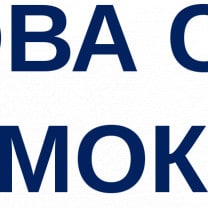
New Serbian Democracy or NSD, is one of the newest political parties in Montenegro, formed on 24 January 2009 as a merger between the Serb People's Party and the People's Socialist Party of Montenegro. New Serb Democracy is led by Andrija Mandić, leader of the former Serb List. Mandić sought to transform the Serb List into a more civic-oriented party, in order to boost the party's coalition potential, and even the dropping of the Serb prefix from the newly formed party's name was considered. This idea was met with strong resistance during the merger talks.
The party won 8 seats in the 2009 parliamentary elections. In 2012 it participated in the Democratic Front coalition which won 23.8 percent and 20 mandates. For the 2020 elections, NSD was again part of the running coalition of Democratic Front, but this time together with the Democratic People's Party, the Socialist People's Party, the Movement for Changes and the Popular Movement Alliance under the name For the Future of Montenegro. All the parties combined obtained 27 seats, of which NSD owned 9. The party entered a coalition with the Democratic People’s Party in the June 2023 elections, together winning 13 seats, of which the NSD obtained 9.
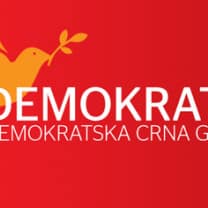
Democratic Montenegro (DCG) was founded in 2015 when it split from the Socialist People's Party. The centrist faction ran together with Demos in the Peace is Our Nations coalition in the 2020 parliamentary elections. DCG obtained 9 seats and Demos 1. Peace is Our Nation formed a ruling coalition with For the Future of Montenegro and the Black and White alliance and therefore stopping the Democratic Party of Socialists (DPS) to continue its 30-year lead. This cabinet fell in February 2022, ousting DCG from power. In the June 2023 elections, DCG formed a coalition with the United Reform Action (URA) party. Together, they won 11 seats, 7 of which were obtained by DCG.
Founded in 2006 to protect the interests of the Bosniak [Muslim] minority, which makes up 7.7 percent of the population according to the 2003 census, the Bosniak Party was formed out of a merger of four small parties: the International Democratic Union, the Party For Democratic Action, the Democratic Alliance of Bosniaks and the Party of National Equality. The party lent the DPS-led government significant support in the independence referendum of 2006. Since the Bosniak minority is concentrated in certain areas of the country, the party favours devolving powers to regions.
The BS decided to run in the 2012 general election independently, winning 4.17 percent and three seats in parliament. It is said to provide majority support to the European Montenegro coalition. For the 2020 elections, the BS ran independently again, obtaining 3 seats. In 2022, the faction was part of the new Abazovic minority coalition. In the June 2023 elections, it won 6 seats.
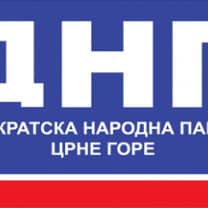
The Democratic People's Party (DNP) is a fiscally centre-left but socially right-wing faction founded in 2015. During the 2020 elections, the DNP was part of the running coalition of Democratic Front, together with New Serbian Democracy, the Movement for Change, the Socialist People's Party and the Popular Movement Alliance under the name ‘For the Future of Montenegro’. All the parties combined obtained 27 seats, of which DNP owns 5. In the June 2023 elections, it entered a coalition with NSD, securing 13 seats in total, 4 of which belonged to DNP.

The Civic Movement United Reform Action (URA) was founded in 2015 by Žarko Rakčević and is currently led by Dritan Abazović. It is a centre-left and green faction which was part of the 2020 parliamentary coalition Black and White. Having obtained 4 seats, it was the only party of this alliance that got into parliament. Since April 2022, Abazović has led a minority government in which he is now outgoing PM. In the June 2023 elections, it won 4 seats.
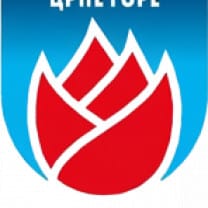
The Socialist People’s Party is a social-democratic, and socially conservative member of the Party of European Socialists (PES). For the 2020 elections, the SNP was part of the running coalition of Democratic Front, together with Serbian Democracy, the Democratic People's Party, the Movement for changes and the Popular Movement Alliance under the name For the Future of Montenegro. All the parties combined obtained 27 seats, of which SNP owned 5. The SNP joined URA in a minority coalition in April 2022. In the June 2023 elections, it won 2 seats.
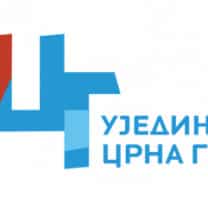

Albanian Alternative is a small right-wing party which represents the Albanian minority in Montenegro. It won 1 seat in the June 2023 elections.

FORCA, also known as the New Democratic Force party, is another party representing the Albanian minority in Montenegro. It was founded in 2005 to represent the Albanian minority in Ulcinj. After being in coalition in 2022-23 with the Albanian List coalition, it obtained one seat in the June 2023 elections, being part of the Albanian Alliance Coalition.

4 Biographies
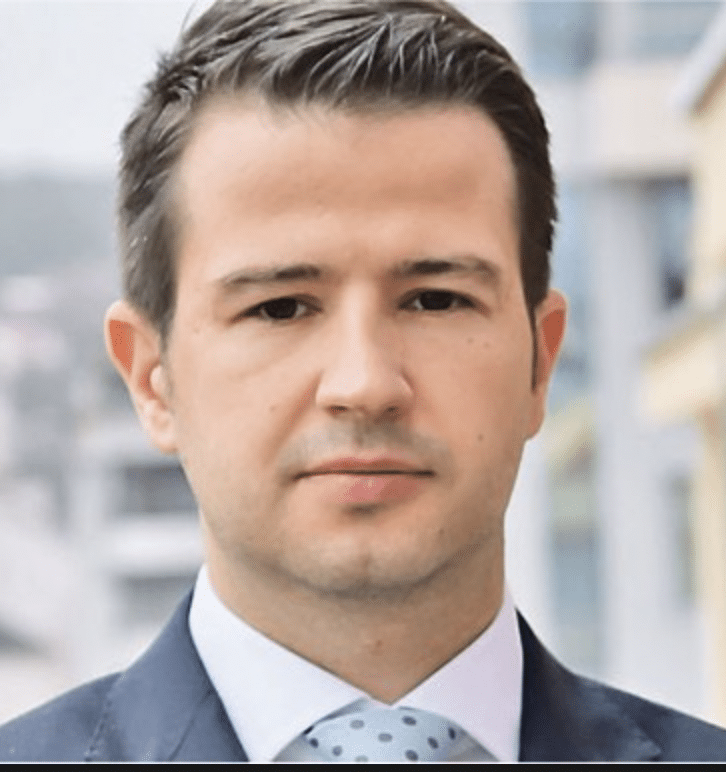
In May 2023, Jakov Milatović became the 3rd President of Montenegro.
He was born in 1986, making him the youngest person to hold the office of president. His father was one of the founders of the Socialist People’s Party (SNP). According to Milatović, his father was unemployed because of his opposition to the Democratic Party of Socialists (DPS). After completing his undergraduate studies in the field of economics in Montenegro, he studied and worked in the US, Austria, Italy, England, and Germany. After having worked as an economist at several banks, he became Minister of Economic Development, implementing the controversial ‘Europe Now’ economic reform program, which boosted his public approval. In 2022, with Spajić. he co-founded the Europe Now! Party as deputy president. He participated in the 2022 local elections, heading the electoral list in Podgorica as its mayoral candidate. The list won 21.7% of the popular vote and Milatović was expected to become the mayor of Podgorica. However, in March 2023 ran as a replacement candidate for Europe Now! in the 2023 presidential elections, as Spajić's candidacy was rejected due to his dual citizenship. He ousted long-ruling president Milo Đukanović and became President in May 2023.
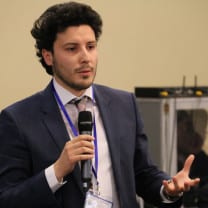
Dritan Abazović is a major figure in the currently fallen cabinet of Zdravko Krivokapić. Abazović is a long-time partner to various NGOs in civil society and human rights. His party United Reform Action, of which he is the president, considers itself a strong civic movement in Montenegrin Parliament.
He opposes the DPS, is anti-corruption and pro-EU accession. His party is currently a member of the European Green Party. In January 2022, Abazović filed a vote of no-confidence to Krivokapić and his cabinet. It was supported by a majority of parliament, causing the awkward coalition that ruled out DPS to fall in February 2022.
Abazović has taken the lead in forming a minority government, which was approved by Parliament in April 2022. His URA party is joined by the SDP, SNP, BS and Albanian Coalition. The minority coalition is leading the country until a new government will form out of the June 2023 elections.
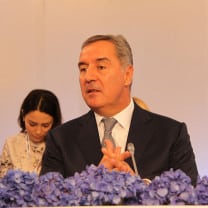
Milo Đukanović was born on 15 February 1962 in Nikšić. He graduated from the Faculty of Economics at the University of Montenegro, Podgorica. In 1979, while still in high school, Đukanović joined the Yugoslav Communist League. By 1986 he was a presidency member of the Socialist Youth Alliance's (SSO) Montenegrin branch as well as the presidency member of its federal level parent organisation. As a member of the party’s various youth bodies he earned the nickname Britva ('Straight razor') for his direct, fiery and forceful rhetoric. Progressing steadily up the party ladder, by mid-1989 Đukanović became a member of the League’s highest decision making body, the Central Committee. He became the Secretary of the Presidency of the League of Communists of Montenegro, a post he held until the parties’ transformation into Democratic Party of Socialists (DPS).
In 1991 he was elected prime minister, becoming the youngest PM in Europe. On 15 January 1998 he was sworn in as President of the Republic, after winning the presidential elections. In the same year he was elected Chairman of DPS. Having led the Democratic Coalition for a European Montenegro to victory in the parliamentary election in October 2002, he was nominated PM Designate of Montenegro. On 8 January he was elected PM for his fourth term. In May 2006 he led the Block for Independent Montenegro at a referendum in which 55.5 percent voted in favour of Montenegrin independence. In the 2006 elections his Coalition for a European Montenegro (DPS and Social Democratic Party, SDP) won an absolute majority.
Although he chose to step down in late 2006, he remained president of DPS. He returned to office as PM after his coalition won the
2009 early elections with an absolute majority, securing him a sixth term in office.
In July 2003, the public prosecutor's office in Naples linked Đukanović with an organised crime network, mainly related to tobacco smuggling during the UN embargo on Yugoslavia. Đukanović denied the allegations as a "loathsome political trick", aimed at criminalising him and his country. The Italian authorities dropped all charges against him in April 2009.
In December 2010 Đukanović for the second time resigned his post as PM, saying he would still play an important role in the ruling DPS. Announcing his resignation he said "the conditions have been created for him to step down". However, he continued to lead the DPS during the 2012 parliamentary elections, securing a win for his party, and returned as a prime minister with the new cabinet in 2012.
In 2018 he became president of Montenegro. After the 2020 parliamentary elections, an awkward coalition formed between several parties to put Đukanović's DPS into opposition. It ended Đukanović's 30 year rule in Montenegro. After this government fell and a new coalition failed to form, Đukanović dissolved parliament on the 16th of March 2023.
In April 2023, Jakov Milatović (Europe Now) won the runoff round of the Montenegrin presidential election. This ended Milo Đukanović’ three-decade spell in prominent government positions. Dukanović quit as party leader after losing the presidential race.
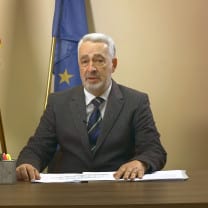
Zdravko Krivokapić (2 September 1958)wasn Montenegro's Prime Minister from his instalment on 4 December 2020 until he was ousted in a motion of no confidence in April 2022. He is a mechanical engineering professor and writer, who has close links to Montenegro's Orthodox Church. After graduation at the University of Belgrade, Krivokapić became a professor at the University of Montenegro. Throughout the years he has released many books, papers and articles on a variety of scientific topics.
He decided to enter politics during the 2019 anti-corruption protests. As the leader of the For the Future of Montenegro pre-election coalition he officially remained independent during the 2020 elections, which his coalition won. It did not manage to gain a majority, but together with other parties they managed to form a government. He can be considered pro-European, economically liberal, culturally conservative and Christian democratic in his political views.
Subscribe to our newsletter
